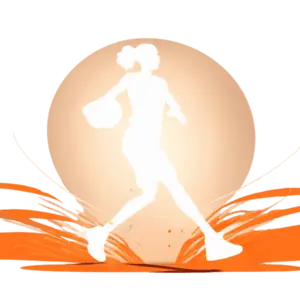Athlete Stalking Crisis: How Social Media Fuels Dangerous Obsessions
The rise of social media has pulled athletes closer to their fans than ever before. But it’s also exposed them to new dangers.
Recently, stalking cases involving athletes—especially women—have surged. These incidents aren’t just affecting mental health and performance; they’re creating real safety risks.
This blog post digs into the issue of athlete stalking. We’ll look at specific cases, the impact on victims, and what’s actually being done to tackle this growing problem.
The Alarming Rise of Stalking Incidents in Sports
Table of Contents
Stalking cases involving athletes have shot up in the past few years. Dr. Park Dietz, a forensic psychiatrist, says threats and stalking have increased dramatically thanks to new media.
Female athletes seem to be the main targets. Oddly enough, there aren’t any scientific studies or public law enforcement tracking these cases.
Still, The Athletic put together a partial list showing at least 52 stalking cases involving athletes since 2020.
High-Profile Stalking Cases
Several cases have really brought this issue into the spotlight. Kiki Rice, a UCLA women’s basketball player, dealt with one firsthand.
A 19-year-old maintenance worker, Latyr Thiaw, grew obsessed with Rice after seeing her on Instagram. Thiaw sent dozens of messages, then flew to Los Angeles and tried to contact Rice multiple times.
Even after a restraining order, Thiaw wouldn’t stop. The harassment caused Rice a lot of emotional distress.
Paige Bueckers, a University of Connecticut basketball player, faced something similar. Robert Cole Parmalee, a 40-year-old man, posted disturbing messages about Bueckers and even traveled to propose to her.
Police eventually arrested Parmalee and charged him with stalking. Still, the incident left Bueckers feeling unsafe and anxious.
The Impact on Athletes
Stalking can take a heavy toll on athletes’ mental health and performance. Many victims feel anxious, distressed, and constantly on edge.
Olympic gymnast Shawn Johnson shared that her own experience with stalking still haunts her. Olympic runner Emily Infeld has started to limit what she shares on social media and takes extra steps to protect herself.
Increased Security Measures
Sports organizations have started ramping up security in response to these incidents. The University of Iowa, for instance, boosted security at women’s basketball home games as Caitlin Clark became more well-known.
The NCAA hired an outside firm to track social media messages sent to coaches, referees, and players. They send any concerning messages to law enforcement.
The WNBA put together an offseason task force to monitor social media threats and add security. The LPGA uses plainclothes police officers for certain players and works with security firms run by former Secret Service agents.
All these efforts aim to keep athletes safe during events.
The Challenges of Legal Protection
Every state, the District of Columbia, and the federal government have anti-stalking laws. But these laws often fall short.
Victims have to report incidents, get restraining orders, and make sure those orders are enforced. The Stalking Prevention, Awareness, and Resource Center says that 40 to 50 percent of protective orders get violated.
Book Your Dream Vacation Today
Flights | Hotels | Vacation Rentals | Rental Cars | Experiences
Some studies even show abuse can increase after an order is granted. That’s a pretty grim reality.
Long-Term Effects on Victims
The long-term effects of stalking can be brutal for athletes. Monica Seles was stabbed during a match in 1993 and later battled depression and an eating disorder for years.
These incidents don’t just affect mental health—they can derail careers and personal lives. Many athletes end up limiting their public presence and taking extra steps to stay safe.
The Need for Comprehensive Solutions
Fixing the problem of athlete stalking isn’t simple. Sports organizations need to keep improving security and support for victims.
Legal protections must get stronger so restraining orders actually work and violators face real consequences. Raising awareness and teaching athletes how to protect themselves matters too.
Stalking incidents involving athletes have been on the rise lately. It’s honestly pretty alarming and feels like something that can’t wait any longer for real solutions.
People are trying to boost security and offer more support to those affected. Still, there’s a sense that what’s being done just isn’t enough.
We need to talk about this more, push for stronger laws, and get serious about better security. Athletes deserve to feel safe, whether they’re on the field or just living their lives.
For more information on this issue, you can read the full article on The Athletic.

